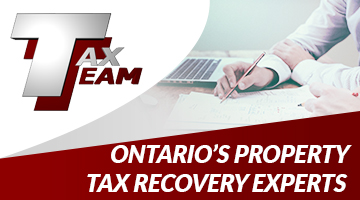Some thoughts from a search expert in these fields.
In my last article, we discussed the leadership qualities and traits that will be required to transition Canada’s Municipalities and the general Public Sector into a post-pandemic reality. As the pandemic recovery slowly makes its way through the economy in Canada and abroad, industries will begin to bounce back, becoming more resilient, agile and innovative under new leadership. As a result, an increase in hiring has surged through the workforce and is transforming the talent landscape from a “War for Talent” to include a “Race For Talent”. So what is the best way that Councils’ and Boards’ in the Public Sector can reach, engage and attract the best talent to lead the recovery.
More often than not Municipal Councils’, Boards’ and Senior Management Teams within the Public Sector will approach the recruitment of a Chief Administrative Officer, Chief Executive Officer, Director or other C-level senior executive similarly to that of a mid-level manager. When taking this effort on themselves, they will post the job description, gather resumes, interview candidates and make a final selection. This approach to running a senior level search internally is compromised for many reasons including:
- There is limited access to qualified leaders beyond your team’s immediate networks.
- A lot of potential candidates are not “actively looking,” are “selective” regarding their career moves and would not apply for the role concerned about a breach of confidentiality. Dealing with a search consultant, before they commit, makes it easier for these candidates to feel comfortable and seek more details about the opportunity.
Countless times I have seen Municipalities and other Public Sector organizations attempt to take on the hiring for a senior executive leader internally, and end up coming to us eventually for help in managing the search process.
In order to avoid this initial waste of resources, time, finances and frustration, I’ve created a guide for how Municipal Councils’, Board’s and Senior Management teams in Canada can partner and work with an external executive search firm for finding and appointing the best leaders for their organizations and communities.
Step 1: What Is Their Specialization? Success In Finding And Placing Right Fit Candidates Who Can Make A Difference
Firstly, you will need to identify the best search firm to partner with. This will include a close examination of several key areas including the types of executives they have placed, other clients they have worked with in the past (are these past clients similar to you and your needs) and a list of recent or past searches. For example, I specialize in placing Chief Administrative Officers’, Chief Executive Officers’, Commissioners’ and Directors’ for Municipalities, Public Sector organizations and Libraries across Canada. To quickly gather this information, review a search firm’s website. If you are still unclear of their specialization and methods you can dive deeper into their thought leadership that they have published. Look for regular postings of thought leadership articles and content about your industry and ask yourself if these articles provide deeper insights than others you have come across or reveal perspectives that you may not have considered. A truly experienced search consultant should be able to demonstrate and provide value to their wider networks in addition to their immediate clients.
Successful search consultants that exceed client expectations, will also see a high rate of repeat and referral business – it is important to understand what percentage of a search firm’s business is repeat or referral business versus new business. The higher the repeat / referral rate – the better the relationship a search consultant will have with their clients. I am grateful to have a very high rate of repeat / referral business.
The final consideration for identifying specialization within a search firm when working in the Public Sector, is to confirm that a search firm or search consultant is a trusted partner and vetted provider with prior experience working with Municipalities and Public Sector organizations. A search firm that has been through this rigorous process of verification, certification, approval and documentation, will be accustomed to these requirements and this process. Having this awareness and experience will save you time and resources when looking for an external search firm to partner with.
Step 2: Why Partner with A Search Firm Instead Of Doing It Yourself?
Aside from the downsides to doing it yourself that I mentioned earlier, there are a number of additional reasons why allowing a well respected third party to manage and run your executive search process will yield better results. In addition to unrivaled candidate access and relationships, a search consultant or search firm you partner with can:
- Collectively gather information from internal stakeholders to create a summary of ideal core competencies, gain trust and build consensus.
- Remain unbiased during the research, interviewing and decision-making processes.
- Conduct interviews to provide a fair and objective process for everyone involved.
- Assure that candidates have fair representation in the interview process.
- Garner buy-in across multiple internal stakeholders.
- Decrease the time to placement / hire by circumventing internal obstacles and politics.
A search consultant should serve as a trusted advisor to both a client and a candidate. Having an objective perspective as a search consultant, they can lead the charge and the process and instill confidence and trust within the candidate. When a search is conducted internally – candidates often will not trust the process for any number of reasons and therefore lose interest, shrinking the available talent pool. This distrust can manifest from any number of prior experiences including:
- Mistreatment in a prior internal interview process
- Losing the role to an internal hire / promotion (for cost hiring purposes)
- Mishired and not a good fit culturally.
The candidate experience is becoming more and more critical to finding and attracting senior leadership talent within the Public Sector. A third party search consultant represents both the client to the candidate and vice versa and will have everyone’s best interests top of mind throughout the entire cycle. When candidates are not selected to move forward for any number of reasons, an expert search consultant will assure that the candidate’s experience remains positive by offering additional coaching, feedback, etc. This in turn creates a favorable impression by the candidate and maintains a Municipality’s or Public Sector organization’s reputation.
Another reason why senior executive candidates do not apply directly to positions is the risk of exposure to their current company which can damage their reputation and career aspirations. As a search consultant, I make sure that the entire search process remains confidential and candidates are informed of their status in a timely and discrete manner – regardless of the outcome.
Once your Search / Recruitment Committee has selected a search firm to appoint your next senior executive, it is imperative to understand the process of how you will work together with a search consultant.
Step 3: Understanding The Executive Search Process.
To set expectations, an executive search process for selecting a new Chief Administrative Officer (CAO) or a Chief Executive Officer (CEO) will take roughly 6-8 weeks to complete. First, we interview Search / Recruitment Committees and the rest of Council / Board members to gain insight, get stakeholders actively involved and identify the core competencies (skills, traits, qualities) of the ideal candidate. When completed, this reveals the summary of the most important core competencies, which are then developed and approved by the Search / Recruitment committee and built into a position profile.
Next, as a search consultant, we go to market to research, find, engage and source candidates that align with these competencies. Our team will often consult with my confidential advisory committee of current and past successful Municipal and Public Sector executives seeking potential referrals for candidates. Typically this initial research will yield approximately 80-100 candidates, who are then scored and ranked against the competency matrix through a round of initial interviews and either moved forward or withdrawn from the process. After this initial screening and research phase, I match the best candidates that align with both the required experience and core leadership skills, resulting in roughly 8-10 top candidates ready to be presented to the Search / Recruitment Committee.
At this point, a truly experienced search consultant will continue to manage and facilitate the interview process between candidates and the search committee. By facilitating panel interviews as a moderator and coaching stakeholders on key questions to ask, a search consultant will make sure that the process remains fair and equitable. This also avoids any possibilities for potential conflict internally and eliminates favoritism and bias.
We would then work with Search / Recruitment Committee stakeholders to build consensus of their top 3 candidate selections. Once further interviews are conducted and a finalist is chosen, we also recommend a unique psychometric assessment expert to conduct an independent assessment of the finalist candidate. I will conduct final reference, credential, criminal background and social media checks. An offer is then extended to the candidate who will then either negotiate or accept.
The above process is an example of a typical search process that has been successful on many occasions in hiring senior executives, however each process is tailored to clients’ specific needs and agreed to in advance. We constantly strive to improve our processes and do so based on feedback from clients.
It is our understanding that the average tenure for a Chief Administrative Officer / Chief Executive Officer in the Public Sector is roughly 3-5 years. If you have any questions regarding the Canadian marketplace or are considering a new executive hire to your leadership team, I am happy to answer any questions you may have. Below are a list of our current searches that we are working on:
Some of Our Past Successful Searches Include:
- Chief Administrative Officer – City of Pickering
- Chief Administrative Officer – City of St. Catharines
- Chief Administrative Officer – Township of Uxbridge
- Chief Administrative Officer – Town of Niagara – On – the Lake
- Chief Administrative Officer – Region of Waterloo
- Chief Executive Officer – Burlington Public Library
- Chief Executive Officer – St. Catharines Public Library
- Director, Economic Development Services – City of Oshawa
- Director, Planning Services – City of Oshawa
- Director, Transit Services – Region of Waterloo
- Director of Municipal Works – City of Niagara Falls
- Director of Operations and Environmental Services – Town of Ajax
- Director of Communications – City of Cambridge
- Director of Information Technology – Ontario Motor Vehicle Industry Council (OMVIC)
- Director of Finance – Ontario Motor Vehicle Industry Council (OMVIC)
- City Manager – City of Cambridge
- Senior Manager, Economic Development – Town of Whitby
About The Author
Kartik Kumar is a Partner at Legacy Executive Search Partners and has over 15 years experience in successfully executing 250 projects within the Public and Private Sector industry segments, including Municipalities and other Broader Public Sector organizations. Kartik has a Bachelor’s in Business Management from Ryerson University and an accredited certification in Diversity and Inclusion from Cornell University.
Prior to joining Legacy Executive Search Partners, Kartik has held several Managing Director and Partner roles within large national and international executive search firms. He has successfully developed an executive search practice across Ontario and Canada within Municipal Government and the broader Public Sector.
Contact Kartik Kumar at [email protected] for Senior Leadership Recruitment within the Public Sector across Canada.



.jpg)





